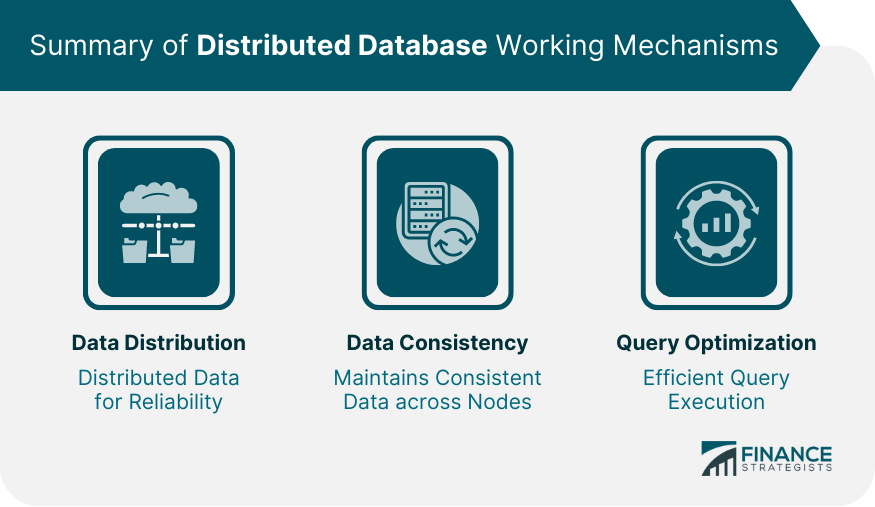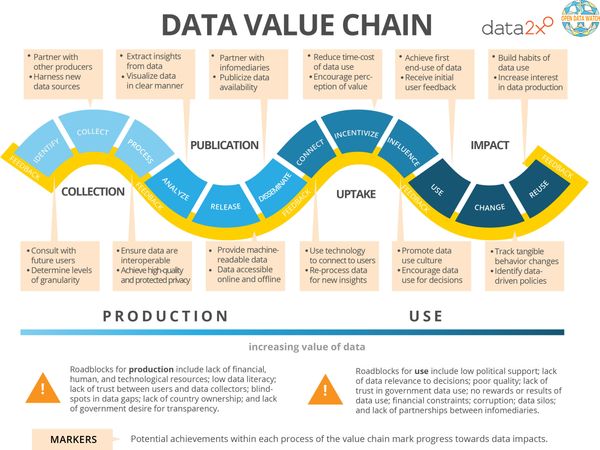Overview
Importance of maintaining high-performing databases
Maintaining high-performing databases is crucial for the smooth operation of any organization. A high-performing database ensures fast and efficient data retrieval, which is essential for meeting business demands and delivering a seamless user experience. It also plays a vital role in optimizing system performance, reducing downtime, and minimizing data loss. By implementing top strategies for maintaining high-performing databases, organizations can enhance their overall productivity, improve decision-making processes, and gain a competitive edge in the market.
Common challenges in database performance
Common challenges in database performance include ensuring data availability, optimizing query performance, managing database growth, and maintaining data integrity. One of the most crucial challenges is data availability, as organizations rely on databases to store and access their critical information. Ensuring that data is always available and accessible to users is essential for maintaining high-performing databases. Without proper data availability, businesses may experience downtime, loss of productivity, and potential financial losses. Therefore, implementing strategies to maximize data availability, such as using replication and backup solutions, is vital for database performance.
Benefits of implementing effective strategies
Implementing effective strategies for maintaining high-performing databases brings numerous benefits. One of the key advantages is improved database performance, which leads to faster query execution and reduced response times. This, in turn, enhances overall system efficiency and user experience. Additionally, effective strategies help optimize database storage and resource utilization, resulting in cost savings and scalability. By implementing these strategies, organizations can ensure data integrity and minimize the risk of data loss or corruption. Furthermore, efficient database maintenance strategies enable proactive monitoring and troubleshooting, reducing downtime and enhancing system availability. Overall, implementing effective strategies for maintaining high-performing databases is crucial for organizations to achieve optimal performance, cost-efficiency, data integrity, and system availability.
Strategy 1: Regular Database Maintenance

Performing routine backups
Performing routine backups is crucial for maintaining high-performing databases. Regularly backing up your data ensures that you have a copy of your database in case of any unexpected issues or data loss. By scheduling routine backups, you can minimize the risk of data corruption and ensure quick recovery in the event of a system failure. Additionally, backups provide a restore point that allows you to roll back to a previous state if necessary. It is recommended to use a reliable backup solution that automates the backup process and stores backups in a secure location. By following best practices for performing routine backups, you can safeguard your database and maintain its optimal performance.
Monitoring and optimizing query performance
Monitoring and optimizing query performance is crucial for maintaining high-performing databases. By closely monitoring database performance, administrators can identify and address any bottlenecks or inefficiencies that may impact the overall performance of the system. This includes analyzing query execution plans, identifying long-running queries, and optimizing indexing strategies. Additionally, regular performance tuning and optimization can help ensure that the database continues to operate at peak efficiency, delivering fast and reliable query results. By implementing effective monitoring and optimization practices, organizations can maximize the performance and responsiveness of their databases, ultimately improving the overall user experience.
Updating database software and hardware
Updating database software and hardware is crucial for maintaining high-performing databases. As technology evolves, it is important to keep your database software up to date to ensure compatibility with new features and security patches. Additionally, upgrading your hardware can significantly improve the performance of your databases by increasing processing power, storage capacity, and network bandwidth. By regularly updating your database software and hardware, you can optimize the efficiency and reliability of your databases, ultimately enhancing the overall performance of your systems.
Strategy 2: Efficient Indexing

Understanding the importance of indexes
Understanding the importance of indexes is crucial for optimizing database performance. Indexes play a vital role in speeding up data retrieval by allowing the database to quickly locate and access specific information. One important database management system that utilizes indexes effectively is MongoDB. MongoDB is a popular NoSQL database that provides powerful indexing capabilities, allowing for efficient querying and data manipulation. With its flexible document model and support for complex data structures, MongoDB is an excellent choice for applications that require high-performance databases. By leveraging MongoDB’s indexing features, developers can ensure that their applications perform optimally and deliver fast and responsive user experiences.
Choosing the right indexing strategy
Choosing the right indexing strategy is crucial for optimizing the performance of databases. One of the key considerations in this process is the selection of the appropriate indexing strategy for SQL Server. SQL Server is a widely used relational database management system that requires efficient indexing to ensure fast and accurate data retrieval. By choosing the right indexing strategy, database administrators can enhance query performance, minimize storage space requirements, and improve overall system efficiency. In this article, we will explore various indexing strategies for SQL Server and provide insights into their benefits and trade-offs.
Regularly reviewing and optimizing indexes
Regularly reviewing and optimizing indexes is crucial for maintaining high-performing databases. Indexes play a vital role in improving query performance by allowing the database to quickly locate and retrieve data. By regularly reviewing and optimizing indexes, you can identify and eliminate any redundant or unused indexes, ensuring that only the necessary indexes are maintained. This helps to minimize the storage space required for indexes and improves overall database performance. Additionally, regular optimization of indexes can help to identify and resolve any performance bottlenecks, ensuring that queries are executed efficiently. Overall, regularly reviewing and optimizing indexes is an essential strategy for maintaining high-performing databases.
Strategy 3: Data Archiving and Purging

Identifying and archiving inactive data
One of the key strategies for maintaining high-performing databases is identifying and archiving inactive data. Inactive data refers to data that is no longer actively used or accessed by the database users. By identifying and archiving this data, organizations can free up valuable storage space and improve the overall performance of their databases. Archiving inactive data involves moving it to a separate storage system or deleting it altogether, depending on the organization’s data retention policies. This strategy helps to optimize database performance by reducing the amount of data that needs to be processed and accessed during regular database operations.
Implementing data purging policies
Implementing data purging policies is crucial for maintaining high-performing databases. One of the key strategies in this process is effectively fetching data. By implementing efficient data fetching techniques, organizations can ensure that only relevant and necessary data is retrieved from the database, reducing the load on the system and improving overall performance. Additionally, data fetching can be optimized by utilizing caching mechanisms and implementing proper indexing. These measures help in minimizing the time required to retrieve data, resulting in faster query execution and improved database performance.
Managing data growth and storage requirements
Managing data growth and storage requirements is crucial for maintaining high-performing databases. As the amount of data continues to increase exponentially, it is essential to implement effective strategies to manage this growth and ensure optimal storage utilization. One strategy is to regularly assess and optimize database schemas, ensuring that they are designed to handle the growing data volume efficiently. Additionally, implementing data compression techniques can help reduce storage requirements without compromising performance. Another important aspect is implementing data archiving and purging policies to remove obsolete or outdated data, freeing up valuable storage space. By proactively managing data growth and storage requirements, organizations can ensure that their databases continue to perform at their best.
Strategy 4: Performance Tuning

Identifying and resolving performance bottlenecks
Identifying and resolving performance bottlenecks is crucial for maintaining high-performing databases. One of the key strategies for improving database performance is database consolidation. Database consolidation involves combining multiple databases into a single, unified database environment. This can lead to improved efficiency, reduced hardware costs, and easier management and maintenance. By consolidating databases, organizations can streamline their data infrastructure and optimize resource utilization. Additionally, database consolidation can help identify and eliminate performance bottlenecks by providing a centralized view of the entire database system. With a consolidated database, organizations can proactively identify and address performance issues, ensuring that their databases continue to operate at peak performance.
Optimizing database configuration settings
Optimizing database configuration settings is crucial for maintaining high-performing databases. By fine-tuning various configuration parameters, database administrators can ensure optimal performance and efficient resource utilization. Some key configuration settings that should be considered include memory allocation, disk I/O optimization, query optimization, and indexing strategies. Additionally, monitoring and analyzing database performance metrics can help identify bottlenecks and areas for improvement. Implementing these strategies can significantly enhance the overall performance and stability of databases, leading to improved user experience and reduced downtime.
Utilizing caching mechanisms
Utilizing caching mechanisms is one of the top strategies for maintaining high-performing databases. Caching mechanisms store frequently accessed data in memory, allowing for faster retrieval and reducing the load on the database server. By caching data, database queries can be executed more efficiently, resulting in improved performance and reduced latency. Additionally, caching mechanisms help to minimize the impact of network latency and improve overall system scalability. Implementing caching mechanisms requires careful consideration of the data that needs to be cached, the expiration policies, and the cache eviction strategies. By effectively utilizing caching mechanisms, organizations can ensure that their databases operate at peak performance, delivering optimal user experiences.
Strategy 5: Security and Access Control

Implementing strong authentication and authorization mechanisms
Implementing strong authentication and authorization mechanisms is crucial for maintaining the security and integrity of databases. One of the key strategies in this regard is query optimization. By optimizing queries, organizations can significantly improve the performance and efficiency of their databases. Query optimization involves analyzing and reorganizing queries to minimize response time and resource consumption. This process includes techniques such as index creation, table partitioning, and query rewriting. Implementing query optimization not only enhances the overall performance of the database but also ensures that the system can handle increasing workloads and user demands. Organizations should prioritize query optimization as part of their database management strategy to achieve high-performing databases.
Regularly updating and patching database software
Regularly updating and patching database software is crucial for maintaining high-performing databases. It ensures that the database remains secure, stable, and efficient. One of the key aspects of database maintenance is the importance of database indexing. Database indexing plays a crucial role in improving query performance and speeding up data retrieval. By creating indexes on frequently queried columns, the database can quickly locate and retrieve the required data, resulting in faster response times and improved overall performance. Additionally, regular updates and patches to the database software help address any vulnerabilities or bugs that may exist, ensuring the database remains protected against security threats. Therefore, it is essential to prioritize regular updates and patching of database software to ensure the continued high performance of databases.
Monitoring and auditing user activities
Monitoring and auditing user activities is a crucial aspect of maintaining high-performing databases. By closely monitoring user activities, database administrators can ensure the security and integrity of the data stored in the database. Additionally, auditing user activities allows for the identification and resolution of any potential issues or vulnerabilities. To enhance database operations, it is important to implement robust monitoring and auditing mechanisms that provide real-time insights into user actions and enable proactive measures to be taken. By doing so, organizations can optimize performance, mitigate risks, and ensure the smooth functioning of their databases.
Conclusion

Importance of implementing high-performing database strategies
Implementing high-performing database strategies is crucial for businesses that rely on efficient data management. A high-performing database ensures faster data retrieval, improved system performance, and enhanced user experience. By implementing these strategies, businesses can optimize their database performance, minimize downtime, and maximize productivity. Additionally, high-performing databases enable organizations to handle increasing data volumes, support real-time analytics, and meet the demands of a growing user base. To achieve these benefits, it is essential to invest in robust hardware, efficient indexing, regular performance tuning, and effective data backup and recovery mechanisms. By prioritizing the implementation of high-performing database strategies, businesses can gain a competitive edge, improve decision-making capabilities, and deliver exceptional services to their customers.
Continuous improvement and adaptation
Continuous improvement and adaptation are crucial for maintaining high-performing databases. As technology evolves and business requirements change, it is essential to continuously assess and optimize the database infrastructure. This involves regularly monitoring performance metrics, identifying areas for improvement, and implementing changes to enhance efficiency and reliability. Additionally, staying up-to-date with the latest industry trends and best practices allows for the adoption of new strategies and technologies that can further optimize database performance. By prioritizing continuous improvement and adaptation, organizations can ensure their databases remain high-performing and capable of meeting the evolving needs of their users and applications.
Achieving optimal database performance
Achieving optimal database performance is crucial for organizations that rely on large-scale data processing. One of the key strategies to achieve this is by using the latest version of MySQL, such as MySQL 8.0. MySQL 8.0 offers numerous performance enhancements and features that can significantly improve the speed and efficiency of database operations. With its advanced query optimizer and improved caching mechanisms, MySQL 8.0 can handle complex queries and large datasets more efficiently, resulting in faster response times and reduced latency. Additionally, MySQL 8.0 provides better support for modern hardware architectures, allowing organizations to fully utilize the capabilities of their hardware infrastructure. By leveraging the power of MySQL 8.0, organizations can ensure high-performing databases that meet the demands of their data-intensive applications.
In conclusion, OptimizDBA Database Optimization Consulting is the trusted industry leader in remote DBA services. With over 500 clients and a track record of delivering transaction speeds that are at least twice as fast as before, we guarantee a significant increase in performance. Our average speeds are often 100 times, 1000 times, or even higher! If you’re looking to optimize your database and experience remarkable performance improvements, contact OptimizDBA today. Visit our website to learn more about our services and how we can help you achieve optimal database performance.







